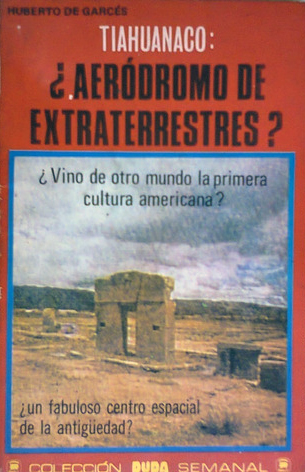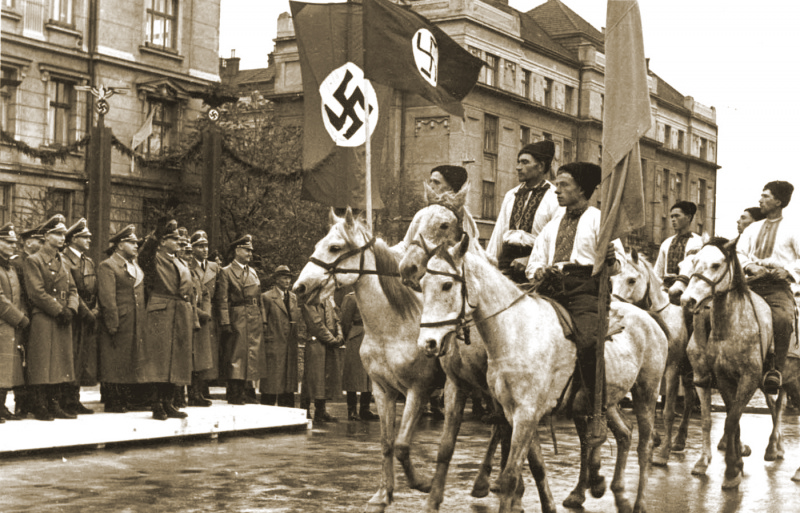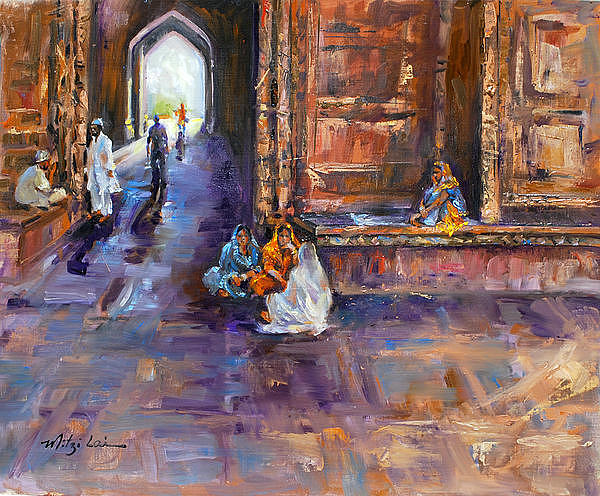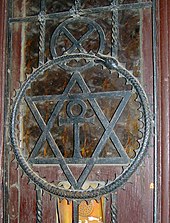The leaders who have led, or will lead, some phase of the eternal struggle ‘against Time’ after the limit point where a last great recovery would still have been possible—after what Virgil Ghéorghiou calls ‘the twenty-fifth hour’—, haven’t been able and won’t be able to leave behind them anything in this visible and tangible world, except a handful of clandestine disciples.
And these have, and will have, nothing to look forward to—except the coming of Kalki; or the Saoshyant of the Zoroastrians, the Maitreya Buddha of the Buddhists, the glorious fighting Christ as expected by the Christians at his ‘second coming’,[1] the Mahdi of the Mohammedans, the immortal Emperor of the Germans surging forth, armed, from his enigmatic Cave at the head of his avenging Knights. He who returns for the last time in our cycle has many names. But He is the same under all of them.
Now He is known by His action, that is, by His victory over all, followed by the dazzling dawn of the next cycle: the new Satya Yuga, or Age of Truth.
The defeat in this world of a Leader who fought against universal decadence, and therefore against the very meaning of Time, is enough to prove that this Leader, however great he may have been, was not Him. He may well have been Him in essence: the eternal Saviour, not of ‘man’ but of Life who ‘returns’ innumerable times. But he was certainly not Him, in the ultimate form in which He must reappear at the end of every cycle.
Adolf Hitler was not Kalki, though he was, essentially speaking, the same as the ancient Rama Chandra, or the historical Krishna, or Siegfried, or the Prophet Mohammed, the Leader of a true ‘holy war’ (i.e., of a ceaseless struggle against the Forces of disintegration; against the Forces of the abyss). He was, like every great Fighter against the current of Time, a Forerunner of Kalki. He was, still in essence, the Emperor of the Cave. With him the latter reappeared, intensely awake and in arms, as he had reappeared before in the person of various great German leaders, especially Frederick II of Prussia, whom Adolf Hitler so revered. But this was not his last and final reappearance in this cycle.
In both cases he had awakened to the sound of the distress of his people. Carried away by the enthusiasm of the action, he had, with his faithful barons, dashed a few steps out of the cave.
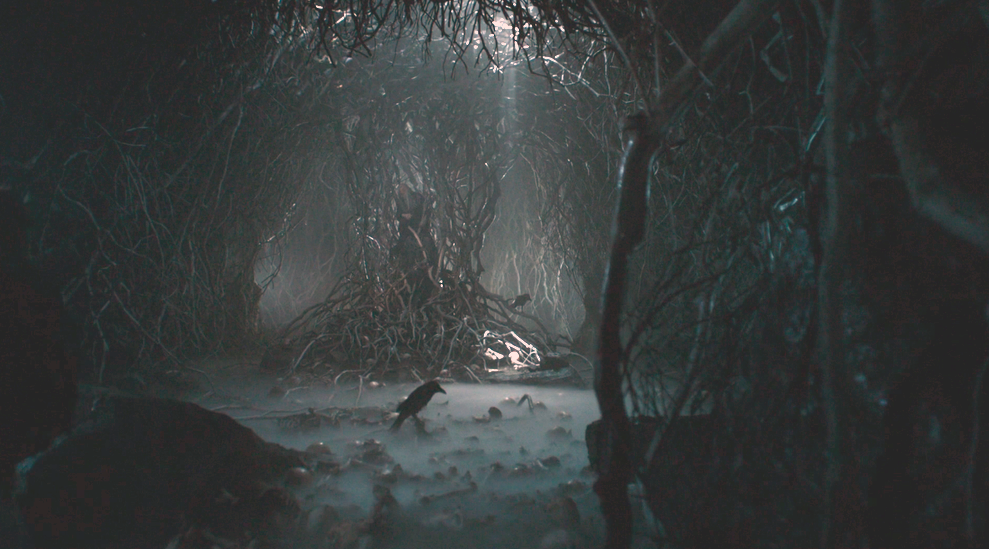 Then he returned to the shadows, the Omniscient Ravens having told him that it was, despite impressive signs, ‘not yet the time’.
Then he returned to the shadows, the Omniscient Ravens having told him that it was, despite impressive signs, ‘not yet the time’.
Frederick II founded the Old Prussian Lodges, through which the more-than-human truth was to continue to be passed on to a few generations of initiates after him. Adolf Hitler left his admirable Testament, in which he too exhorts the best to keep their blood pure, to resist the invasion of error and lies—of the counter-Tradition—and to wait.
He knew that the ‘twenty-fifth hour’ had come, and long ago. At the age of sixteen, as I have already mentioned, he had a premonition of his own materially useless but necessary struggle.
As a German, as an Aryan, a man conscious of the excellence of the Aryan race, although he was an integral part of it, he was eager to defeat the world arrayed against him and his people. He was striving with all his strength, with all his genius, for the building of a superior and lasting society, a visible reflection of the cosmic order, the Reich of his dreams.
And he was striving against all hope, against all reason, in an inordinate effort to stop at all costs the levelling, the dumbing down, the disfigurement of the most beautiful and gifted variety of men; to prevent forever its reduction to the state of a mass without race and character. And he struggled, with all the bitterness of an artist, against the shameless destruction of the living and beautiful natural environment, in which he rightly saw an increasingly patent sign of the imminent victory of the Forces of disintegration.
His irrational confidence in an in extremis salvation using the ‘secret weapon’; his feverish expectation, under burning Berlin, of the entry into action of ‘General Wenck’s army’, which had long since ceased to exist, are reminiscent, in dramatic absurdity, whatever Christians may think, of Christ’s attitude in Gethsemane, praying that the chalice of suffering, which he had come to drink to the dregs, might be removed from his lips.
Adolf Hitler—since he was a combatant against Time, whose kingdom, if it belonged to the eternal, was also ‘of this world’—clung to the illusion of total victory and, despite everything, of an immediate recovery to the end. He clung to it, I repeat, as a German and as a man. As an insider, he knew that this was an illusion, that it was ‘too late’ already in 1920. He had seen it, on that extraordinary night on top of Freienberg in 1905. And the real leaders of the ‘Black Order’—in particular those of the Ahnenerbe, aware as he was of the inevitability of the cycle that was nearing its end—were already preparing, before 1945, the clandestine survival of the essential, beyond the collapse of National Socialist Germany.
And we who follow them and him also know that there will never be a Hitlerian civilisation.
No, hope no more to see us again,
Sacred walls that could not preserve my Hector.
I remember this verse that Racine puts in the mouth of Andromache, in scene IV of the first act of his tragedy of that name. And I think that the grandiose parades to the rhythm of the Horst Wessel Lied, under the folds of the red, white and black swastika standard, and all that glory that was the Third German Reich, the nucleus of a pan-Aryan Empire, are as irrevocably past as the splendours of prestigious Troy; as ‘past’ and as immortal, because one day Legend will recreate them, when epic poetry is again a collective need.
He who returns from age to age, both destroyer and preserver, will appear again at the very end of your cycle, to open to the best the Golden Age of the next cycle. As I have recalled in these pages, Adolf Hitler was waiting for it. He said to Hans Grimm in 1928: ‘I know that I am not the One who is to come’, that is, the last and only fully victorious Man against Time of our cycle. ‘I only take on the most urgent task of preparation (die dringlichste Vorarbeit), for there is no one to do it’.
One incommensurably harder than he will accomplish the final task—the task of rectification—on the ruins of a humanity that believed all was permitted because it is endowed with a brain capable of calculations, and which largely deserved its fall and its loss.
__________
[1] The Deuteria Parousia spoken of by the Greek Orthodox Church.
 Richard Spencer has been harshly criticised on racialist forums (see for example the thread on Occidental Dissent, here). A couple of days ago I quoted a tweet in which Strom was replying to Spencer, but the latter has just tweeted:
Richard Spencer has been harshly criticised on racialist forums (see for example the thread on Occidental Dissent, here). A couple of days ago I quoted a tweet in which Strom was replying to Spencer, but the latter has just tweeted:
